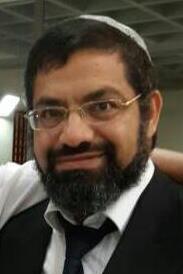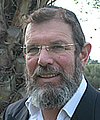The Book of the Covenant
הרב זכריה טובי
ראש הכולל
Parshat Mishpatim relates the second stage of ma'amad Har Sinai: "[Moshe] took the Book of the Covenant and read it in earshot of the people, and they said, 'Everything that Hashem has said, we will do and we will listen.'" (Shemot 24:7) What was written in that Book of the Covenant? Rashi writes in the name of the Mechilta: "From Bereishit until matan Torah, and the mitzvot that they were commanded at Marah."
We find, though, that in Parshat Yitro and earlier in Parshat Mishpatim – before writing the Book, the people only say, "We will do!" "The entire people responded together and said, "Everything that Hashem has spoken we will do!'" (19:8) "The entire people responded with one voice and they said, "All the words that Hashem has spoken, we will do.'" (24:3) The question is: Why is it only after Moshe wrote these things in the Book – then the people said, "We will do and we will listen?"
It says in the Yerushalmi (Shekalim 6:1): "Rav Papa [said] in the name of R. Shimon b. Lakish: The Torah that Hashem gave Moshe, was given to him as a white fire engraved with black fire." (Perhaps for this reason we write the Sefer Torah with black letters on white parchment, which is similar to black fire on white fire.) What is the significance of this?
The Chavot Da'at (author of Netivot Hamishpat) explains the pasuk in Parshat Ha'azinu, "It is not an empty thing for you" (Devarim 32:47), that the Sefer Torah has space for the letters and blank space between the letters. The written letters are the symbol of those talmidei chachamim who have inherent sanctity and value, whereas the white space of the Torah parchment corresponds to those souls of Bnei Yisrael who are involved in building the world, who are also connected to Torah. This is, "It is not an empty thing for you" – that even the empty space has sanctity, which is hidden and not noticeable to us.
Based on this, we understand Chazal's comment that Yissachar's stone is the sapir (dark blue) and his flag is similarly colored black, whereas Zevulun's stone is the diamond and his flag is colored white. Yissachar, who is involved in Torah, corresponds to the black fire that is written in the Sefer Torah, whereas Zevulun – who is not actively involved in Torah, but who supports Yissachar – is connected and tied to Yissachar and deserves the color white, which is the parchment of the Torah. This is the white fire upon which the black fire is written, and the black letters cannot possibly exist without the white parchment upon which they are written.
This is what Chazal say, "If there is no flour there is no Torah; if there is no Torah there is no flour" (Avot 3:17) – one is not possible without the other. Based on this we also understand what Chazal say, "Rava said: How foolish are those other people who stand before a Sefer Torah and do not stand before a great [Torah] person." (Makkot 22b) The sanctity of the Sefer Torah is from the black letters, which correspond to the talmidei chachamim who are involved in Torah, and they endow holiness to the parchment – the other people who are involved in building the world. Therefore, they certainly need to get up before them – because this is the whole essence of the sanctity of the Sefer Torah.
With this we can understand the importance of writing the words of the Torah in the book of the Covenant. Writing in the Book symbolizes the connection between the talmidei chachamim – the teachers of the Torah, who are the black letters, and Am Yisrael – who are compared to the white parchment upon which the letters are written, and who draw holiness from the talmidei chachamim. Therefore, when this was written in the Book, Am Yisrael say: "We will do and we will listen." Now that they understand that they are to cling to the righteous and the talmidei chachamim, they are ready to listen to all that they instruct them: "According to the teaching that they will teach you ... you shall not deviate from the word that they will tell you, right or left. "(Devarim 17:11) This is, "We will do and we will listen" – we are prepared to listen to anything that the Torah Sages instruct.
The Tablets are the first part of the covenant, while the essence of the covenant is fulfilled through the Torah itself, and one who clings to it is connected to the Creator. It says in Beit Elokim of the Mabit (Sha'ar Hayesodot, ch. 28):
Immediately as Moshe wrote from the mouth of G-d, the letters, which were written before Him with a black fire upon a white fire from the mouth of G-d, were transferred, and Moshe would write them. Like these very letters, that were written before Him, may He be blessed, were transferred from the white fire to the holy parchment that Moshe Rabbeinu had prepared to write the Sefer Torah on it.
Even in the Sefer Torah that Moshe Rabbeinu wrote the words were transferred from G-d's mouth. This is the sanctity of the Sefer Torah, and G-d and the Torah are one, and one who learns Torah is connected with G-d Himself.
קוד השיעור: 3689
(Translated by Rav Meir Orlian)
לשליחת שאלה או הארה בנוגע לשיעור:





